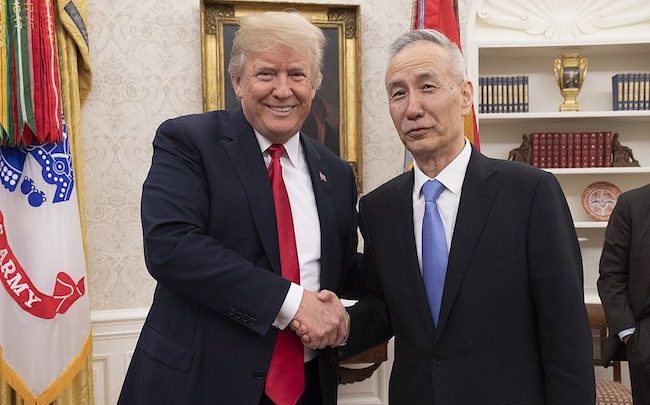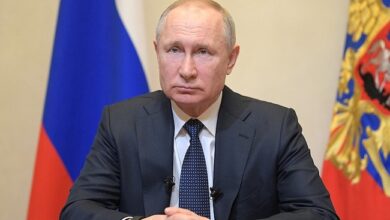
By Iqra Mumtaz
US-China relations will determine the landscape of international arena. The global power politics contributes to the stability and security of the world. From partners during cold war, economic friends in the post 9/11 era and to enemies in the first decade of twenty-first century. The patterns and trends in Sino-American relationship have been characterized by a series of ups and down. Therefore, historical analysis of US-China relations is important to predict the possible outcome of this rivalry.
Pre-WW1 Relations:
The Chinese history with America can be traced to the Qing Dynasty. The regime that ruled for almost 3 centuries was majorly marked by external interventions and invasions.
American traders were one of the first ones to have interaction with China. The Tribute System that maintained foreign relations advocated implementation of Chinese laws and governance system upon foreigners. Though the system had ancient roots, China’s relations with US started during the nineteenth century. At this time trade with the outside world became less unconfined. Tea being one of the most important imports between both the countries. Opium at that time was another famous commodity. The two successive Opium Wars with Great Britain bought an end to the Tribute System.
Following the footsteps of France and Britain of imposing their interest by force, US also gained profits through this. The imposed foreign treaties provided these countries greater access to Chinese ports. Development of agreements and agencies such as Treaty of Wang-Hsia, Open Door Notes and Chinese Imperial Maritime Custom Services promised Americans more privileges.
At the same time, Chinese labor in America was facing strong waves of prejudice. The restrictions on immigrants increased such as the Gerry Act. Simultaneously, violence against the missionaries by local Chinese elites and the gentry was witnessed. The massacres, rebels and revolts were part of this.
World Wars:
The twentieth century can be considered one of the more happening periods in China’s lifetime. From World Wars, Civil War and Cold War to revolution, economic reformation and revolts, China faced it all. The fall of Qing Dynasty in 1912 resulted in the formation of the Republic of China under the presidential leadership of Sun Zhongshan. The league of Nationalists, working under the guidance of USSR, emerged as a political party in 1912. During the first World War in 1915, China sided with the Allies. After the death of first president, Yuan Shikai, the government lost much authority and local leaders maintained the role of rulers. However, the Treaty of Versailles that formally ended the war, gave these lands to Japan. The Washington Conference Agreements headed by US, resolved this issue.
In 1925, Sun Zhongshan, who was known as the “national father” died. His successor Chiang Kei-Shek brought all of China under his supremacy. The Soviet- backed communists that were working in collaboration with the nationalists, helped in development of Chinese Communist Party (CCP). The united front between the two helped Chiang in bringing the majority of the country under his control, militarily. America became the first nation to recognize his government formally. However, after coming to power, the partnership with communists came to an end. Mao Zedong, emerged a strong leader of CCP and solidified his presence.
Cold War and Containment
After defeat of Japan, the common enemy was gone which made the Civil war imminent. The civil war started in 1946 and ended with communists as the victors. Chiang fled to Taiwan with his almost 1.5 m supporters. Thereby, People’s Republic of China (PRC) was found by Mao Zedong on 1 October, 1949. From 1949-1971, United States tried continuously to destabilize the communist rule. Americans thought of the Asian state as an aggressive and expansionist power. It formed numerous military alliances along China’s eastern and southern border. SEATO, CENTO and ANZUS are perfect examples. Just after one year of its creation, Beijing and Washington faced off in their first war. The Korean War was between Soviet-backed communist, North Korea and US supported, capitalist South Korea. The first military clash between US and China since the Boxer Uprising was instigated. The war raged on for 4 years and was ended by the signing of an Armistice in 1953.
Furthermore, the American support for nationalists in Taiwan continued. The following year saw the first Taiwan Strait Crisis. Tibetan Uprising, gave US another chance to condemn China for human rights abuses in Tibet. In 1964, China became a nuclear state with the testing of its first atomic bomb. Both the countries again became involved in another proxy war after increasing tensions over Vietnam. China after the rising presence of American forces in South Vietnam, started sending its own assistance to North Vietnam.
It was at this time that Americans were prohibited from visiting China and America made its allies to refrain from engaging China in diplomatic relations.
Rapprochement:
The Nixon Doctrine in 1969, brought a positive turn to the tense relations. United States President Nixon announced a policy review regarding Asia. He proclaimed to reduce military involvement in the country and to reevaluate the encirclement policy imposed on China. As a result of this, Ping Pong Diplomacy which warmed relations, also took place. The USA players were the first Americans to enter since inception of PRC. In the same year, Henry Kissinger made a secret visit to the country and after this United Nations recognized People’s Republic of China and also provided it with the Security Council permanent seat.
Furthermore, diplomatic strategies such as “Formal Ties and One China Policy”, “Third Joint Communique” and exchange of visits by the leaders provided a catalyst for more improvement. Both the countries collaborated on containing Soviet presence and influence in Asia.
However, complete normalization still seemed slow. Internal factors of both played a part in this. The process further hindered by change in American leadership, from Nixon to Ford.
Engagement:
In 1979, the governments formed full diplomatic relations. The period of late 1980s was ruled by President George W Bush. Despite all this, these ventures proved to be futile when Tiananmen Square Massacre happened. In China, it was Deng Xiaoping’s government, who came to power in 1977. His reforms that opened China more to the outside world, bought quick economic growth also introduced inequalities in society. The lack of political reforms generated frustration and widespread discontent. Hundreds were killed during the protest at Tiananmen Square. US suspended its military sales and placed sanctions. CCP government viewed these acts as undermining of legitimacy.
Deng’s leadership was a staunch supporter for economic development and considered it as the key to China’s prosperity and maintaining social stability within the country. Therefore, US was still the most profitable market for China in 1990 and the primary source of technology. Next few years saw a period of turbulence and stability due to decrease in China’s geopolitical importance for Washington. Simultaneously, China joined multilateral institutions and treaties, such as General Agreement on Tariffs and Trade (GATT) , NPT and Asia-Pacific Comic Cooperation (APEC). These memberships helped in boosting its economy.
The end of cold war period marked new phase for Sino-US relations.
Post-Cold War relations:
Exchange of officials in 1994 and Normalized Trade Relations in 2000 were some significant incidents. Chinese economy in the 2000s, made tremendous developments. Its trade with US jumped from $5 billion to $231 billion. US had to shift its foreign policy focus towards tackling the issue of terrorism. After the events of 9/11, America actively sought China’s help. China answered cooperatively with voting in favour of UN Resolutions that allowed for the use of force against Taliban.
The coming years saw great collaboration. The country became the second trading partner of US in 2006. In 2007, after an increase in Chinese military budget, the “peaceful rise” was questioned by US officials. PRC also became America’s largest debt holder. The increasing interdependence was highlighted during the 2008 Global financial crisis. China in 2010 became the world’s 2nd largest economy.
While Barack Obama’s administration made genuine efforts to engage China, its repeated calls for Beijing’s abidance with international norms hindered these developments. Change in policy was witnessed by America. The “Pivot to Asia” policy introduced by Hilary Clinton in 2011 was applied in practice.
The same year, Xi Jinping became the new president with emphasis on “rejuvenation of China”. The foreign policies became more assertive especially on security issues.
Second Cold War:
The trade tensions saw new developments. Disagreement over issues like, human rights, Taiwan, Tibet, Covid-19, Climate Change, technology and trade policy expanded the scope of their relations.
China’s increased significance in the Asian Pacific region led to this expansion. Belt and Road Initiative (BRI), a mega infrastructure investment was also initiated. China during this time also adopted more despotic policies. Violence against Uyghur, feminists and Christians rose. Trump affirmed One China Policy but narrative shift from being a strategic partner to strategic competitor took place in his regime. Covid-19 arrived and became another source of conflict. Leading governmental officials blame the each other for the spread and origin of Covid. Under Biden Administration, US-China relations remained on edge. Critical trade and technology issues remain unresolved. China’s refusal to oppose Russia over the invasion of Ukraine threatens to further undermine U.S-China ties. Taiwan again became the battleground after American House Speaker, Nancy Pelosi announced a trip to US.
Conclusively, the dynamics of the past can be seen reflecting in the present. The trade relations of nineteenth and twentieth century bear resemblance of the trade conflict going on. The waves of partnership and animosity can also be viewed now.
Iqra Mumtaz is an undergraduate student of Peace and Conflict Studies, National Defence University, Pakistan. Her areas of expertise include Hybrid and Hyper war, Gender, disinformation and violence, Spatial warfare and US- China. She has published works on national and international platforms.




